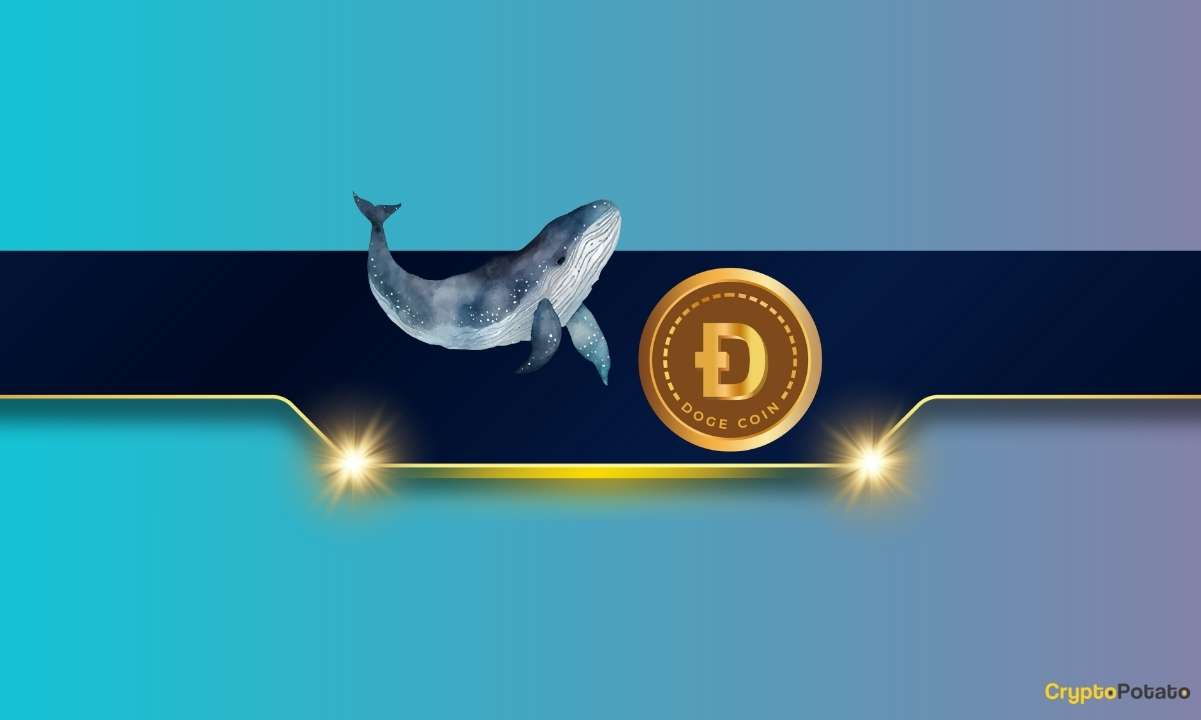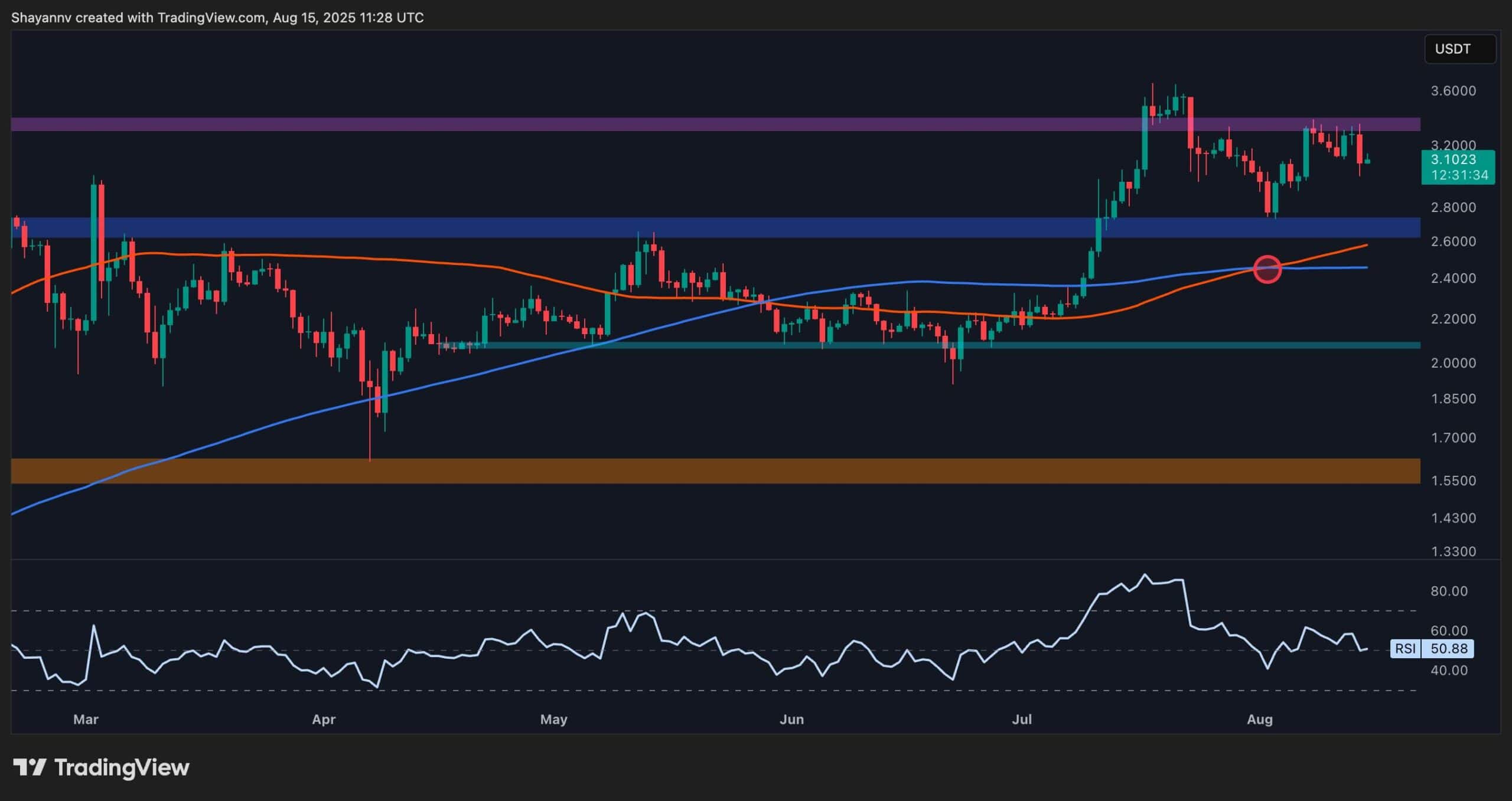Cryptocurrency
Making real-world blockchain solutions possible — Solana co-founder Raj Gokal

Raj Gokal, co-founder of blockchain protocol Solana and chief operations officer of Solana Labs, started his career in venture capital with a focus on high-growth tech business.
For seven years, Gokal focused on health tech, first with wearable sensors using Bluetooth Low Energy as a wireless protocol, then leading product management at Omada Health. He aimed to address the fractured, challenging United States healthcare system but “encountered challenges with health plans and regulators, leading me to recognize the industry’s persistent issues,” he told Cointelegraph.
After meeting Solana co-founder Anatoly Yakovenko and seeing his “vision to resolve scalability in crypto,” Gokal immersed himself in the crypto industry. “The journey has been rewarding over these past five years.”
Recently, Gokal sat down for an interview with Cointelegraph to discuss Web3, scalability, tokenization and more.
Cointelegraph: There has been a noted absence of substantial real-world use cases in the Web3 domain. This contributes to the perception that there’s no product-market fit for the industry. What are a few real-world use cases Web3 is currently prioritizing?
Raj Gokal: A real-world use case that comes to mind is decentralized physical infrastructure networks, or DEPIN. Developers often lead the way, as seen with projects like Helium, which established a decentralized 5G network with 1.5 million hotspots before transitioning to Solana. Similarly, Hivemapper launched its decentralized maps, utilizing a distributed global workforce equipped with dashcams. This is now an alternative to a centralized organization like Google deploying tens of thousands of cars that it owns to map the roads.
The Hivemapper network remapped 8% of the world’s roadways in just a few months, which is very much a real-world application of Web3 on Solana. These ventures showcase the viability and significance of leveraging low-cost, scalable blockchain technology to create innovative solutions. Developers across the world come together without any central authority and create successful business models with tangible value.
CT: Your ambition was to resolve scalability challenges within Web3. What architectural considerations are essential when building real-world solutions on layer-1 platforms?
RG: The benefits of parallelized transaction processing and validation are foundational, offering various advantages for developers and users. Solana pioneered these features, optimizing for speed with 400-millisecond block times and near-instant confirmations. We hear testimonials from users that a transaction was completed on Solana even before they could switch tabs. This fast, seamless experience builds trust and user satisfaction. Additionally, low transaction costs are crucial.

Compatibility and composability are essential, too, allowing various applications to work together. Decentralization is a linchpin, ensuring longevity and reliability. For instance, on Solana, we have close to 3,000 validators and the highest Nakamoto coefficient of 33 across all blockchains. While achieving these feats within a decentralized, high-performance network is challenging, it has been achieved through rigorous effort and innovation.
There are several such architectural decisions that make real-world solutions possible on blockchains. It is often not just one feature — it is the convergence of several architectural considerations that make it viable and scalable.
I also think blockchain networks must be battle-tested across multiple cycles. As ecosystems thrive through difficult market conditions, it provides developers, users and investors confidence that the network is here to stay.
CT: Let’s move on to Web3’s approach to mobile and payments. Solana has taken steps to introduce Solana Pay. You also recently launched the Saga phone. What are the motivations behind this, and how does it impact the broader mobile and payments landscape?
RG: The Solana Saga phone has shown that there is a huge opportunity for handset and operating system makers to create a sandbox where developers can build what they want with token incentives and without any restrictions on nonfungible tokens. Since the launch of the Saga, Apple and Google have eased their stance on digital assets in their application stores.
We have seen similar initiatives in the past, when Tesla created a new market for electric vehicles. It started with the Roadster, which initially only sold a few thousand cars. But over time, it has made it a more accessible mass-market product. We should see a similar trajectory for Web3-friendly mobile phones over the coming years, and Saga is just the beginning.
Solana Pay, on the other hand, operates at the crossroads of fostering a more accessible and open payments ecosystem. If you look at the Bitcoin white paper, the initial purpose of Bitcoin and the whole idea of digital money was to facilitate permissionless peer-to-peer online payments. That was the initial vision for cryptocurrencies.

By providing an alternative platform, Solana aims to influence these giants to adopt more user-centric and app-friendly frameworks. As for Solana Pay itself, it’s designed to enable any developer to integrate QR code-based payment features across various contexts, whether in point-of-sale systems, mobile apps or web-based services.
This has sparked initiatives like Decaf in over 30 countries, focusing on cross-border remittances. Sling, another Solana-powered platform, competes with Venmo on a global scale. Over the next few years, we can anticipate an upsurge in grassroots and enterprise-driven solutions that leverage crypto for payments.
CT: Let’s talk about real-world asset tokenization. While this area holds immense potential, it hasn’t fully taken off. What are the barriers preventing the widespread adoption of real-world asset tokenization, and how can these hurdles be overcome?
RG: Real-world asset tokenization indeed presents enormous opportunities, especially in sectors like real estate. Initiatives such as Parcl and Homebase are pioneering this space, though it requires time for adoption. For instance, Homebase is focused on individual properties that are tokenized and fractionalized so that you can get rental income that is globally accessible to anyone.
This space is about providing assets that people actually want and then making sure the narrative is good enough to win mindshare and convince users that real-world asset tokenizations are now something that’s possible. The idea looks sound on paper, but often, it takes time to execute, and we just need founders who are good at carrying the messaging for this space and have strong product skills. Success hinges on creating accessible, user-friendly, trustworthy platforms that offer real value to users, but also in delivering the narrative to the target users.
Over the next few years, the collective efforts of dedicated teams and the introduction of innovative platforms will likely drive increased adoption and establish a strong presence in the market.
CT: What strategies can mitigate risks associated with potential outages or technical difficulties within the Web3 ecosystem?
RG: Addressing liveness [i.e., the guarantee that a protocol can exchange messages between the network nodes, allowing them to reach a consensus] and reliability issues is essential to ensure seamless operations in real-world applications. The industry has learned from mistakes committed in the past and has actively implemented solutions to minimize outages. This will be critical for institutional adoption, as they will want to see reliable infrastructure before embracing this innovation at scale.
Networks like Solana have made significant strides in enhancing liveness and minimizing potential issues. Collaborative efforts between multiple validator clients, diverse solutions and continuous refinement of the ecosystem have led to increased stability and dependability. While the Web3 space is still evolving, the focus on these aspects will likely lead to even greater reliability over time.

CT: What would you define as a product-market fit for layer-1 protocols and the broader Web3 ecosystem? What would the user experience look like in your view?
RG: I think there are two stages of product-market fit. One is where founders and developers are able to either fund themselves or get funding to launch products that work toward end-user product market fit. And I believe we have achieved that level of product-market fit. Even in the depths of the bear market, you still see quality teams get funded, things are getting pushed forward, and new products are being launched.
Then, there is the second level, which is end-user product-market fit. And I would say that is a stage where the majority of the value that users are getting is not speculative from buying and holding assets but is from earning by contributing to networks, where the value is being shared back to the user. That’s why sectors like DEPIN, even though there are not 100 DEPIN examples, are happening. Users are using their hardware to earn money in crypto by supporting a network that adds real-world value to users. It’s exciting, and I’ll admit that it’s early.
Cryptocurrency
Ethereum Foundation, Whales, and Hackers: What’s Driving the ETH Sell-Off?

TL;DR
- Whales, hackers, and the Ethereum Foundation wallets moved over $500M in ETH through large sales and withdrawals.
- Ethereum transfers rose to 4.6M ETH, nearing the monthly high of 5.2M recorded in July.
- Staking inflows hit 247,900 ETH, the highest in a month, locking more supply from trading.
Large Withdrawals and Whale Activity
Ethereum (ETH) has seen heavy movement from major wallets over the past few days. On-chain data from Lookonchain shows a newly created wallet pulled 17,591 ETH, worth $81.62 million, from Kraken in just two hours.
Over three days, two new wallets withdrew a combined 71,025 ETH, valued at $330 million, from the exchange.
One of these wallets, address 0x2A92, has withdrawn 53,434 ETH, worth $242.34 million, in two days. This includes a recent purchase of 30,069 ETH, valued at $138.46 million, during a market drop.
Major ETH Holders Offload Millions Amid Price Rally
In contrast, several separate entities have been disposing of some ETH holdings. A wallet tied to a hacker address 0x17E0 sold 4,958 ETH for $22.13 million at $4,463, securing a profit of $9.75 million. Earlier this year, the same address sold 12,282 ETH at $1,932 and later bought back part of the amount at higher prices.
A different whale sold 20,600 ETH for $96.55 million over the past two days, generating a profit of more than $26 million after holding the position for nine months.
Meanwhile, an Ethereum Foundation-linked wallet, 0xF39d, sold 6,194 ETH worth $28.36 million in the last three days at an average price of $4,578.
Recent sales from the same wallet included an additional 1,100 ETH and 1,695 ETH for over $12.7 million combined.
The #EthereumFoundation-linked wallet(0xF39d) sold another 1,300 $ETH($5.87M) at $4,518 ~11 hours ago.
Over the past 3 days, this wallet has sold a total of 6,194 $ETH($28.36M) at an average price of $4,578.https://t.co/4hfCWymHVG pic.twitter.com/ErUyEY8SJy
— Lookonchain (@lookonchain) August 15, 2025
Network Activity on the Rise
CryptoQuant data shows Ethereum’s total tokens transferred have been climbing since August 9. After ranging between 1 million and 3 million ETH through late July and early August, transfers have risen to 4.6 million ETH, approaching the monthly high of 5.2 million recorded in mid-July. This increase has occurred alongside a price rally from about $3,400 to $4,600.
Interestingly, staking inflows generally stayed between 20,000 and 80,000 ETH per day over the past month. On August 14, inflows jumped to 247,900 ETH, the highest in the period.
At the time, ETH was trading near $4,600. Large staking deposits reduce the amount of ETH available for immediate trading, as staked coins are locked for a set period.
In the meantime, ETH trades at $4,647 with a 24-hour volume of $68.25 billion, down 2% on the day but up 19% over the week.
Binance Free $600 (CryptoPotato Exclusive): Use this link to register a new account and receive $600 exclusive welcome offer on Binance (full details).
LIMITED OFFER for CryptoPotato readers at Bybit: Use this link to register and open a $500 FREE position on any coin!
Cryptocurrency
Massive DOGE Whale Activity Hints at $1 Breakout

TL;DR
- Whales bought two billion DOGE this week, lifting their combined holdings to 27.6 billion coins.
- A single 900M DOGE transfer worth $208M to Binance drew attention to large exchange movements.
- DOGE broke key resistance, with momentum building for a possible push toward the $1 price mark.
Price and Market Moves
Dogecoin (DOGE) traded at $0.23 at press time, slipping 4% over the past day but still showing a 2% gain for the week. Daily turnover came in at about $6.18 billion.
Meanwhile, the broader crypto market saw over $1 billion in liquidations. Hotter-than-expected US Producer Price Index data pushed traders to scale back expectations of a near-term Federal Reserve rate cut. DOGE had roughly 290,500 coins liquidated during the sell-off.
On the two-week chart, analyst Trader Tardigrade notes that DOGE has cleared a downward-sloping resistance line after completing what appears to be a “wave V” in an Elliott Wave sequence. Similar setups in the past, where prolonged declines stayed within falling channels before breaking higher, have been followed by sharp rallies.
$Doge/2-week#Dogecoin is gaining strong momentum to surge above $1 pic.twitter.com/TuSEKr19nv
— Trader Tardigrade (@TATrader_Alan) August 15, 2025
Momentum gauges are also turning up. The Stochastic RSI, which had dropped into oversold territory, is now heading higher. Previous reversals from this zone have coincided with sustained upward moves. The current formation points to a possible run that could carry DOGE past the $1 mark.
Heavy Whale Buying and Large Transfers
As reported by CryptoPotato, blockchain data shows large investors have added two billion DOGE in the past week, spending just under $500 million. That brings their holdings to about 27.6 billion coins, or 18% of the supply. The buying streak has prompted speculation within the community.
Recently, Whale Alert flagged a 900 million DOGE transfer worth about $208 million into Binance. The tracking indicates that it originated from a wallet connected to the exchange, likely as an internal activity. The address involved holds 2.88 billion DOGE, one of the largest balances on the network.
Ali Martinez also reports that transactions above $1 million reached a one-month high, with activity building since early August and peaking as DOGE traded at $0.25.
Whales are back! Dogecoin $DOGE activity at a 1-month high. pic.twitter.com/C83Pv68mCt
— Ali (@ali_charts) August 14, 2025
Sentiment Building
Analyst Gordon described the current setup as “a nice bit of consolidation” before a potential breakout, adding,
“This will be one of the first coins normies FLOCK to & the pump will be MASSIVE.”
With whale accumulation rising, high-value transfers increasing, and a bullish technical pattern in play, DOGE is positioned for a potential push toward $1 if momentum holds.
Binance Free $600 (CryptoPotato Exclusive): Use this link to register a new account and receive $600 exclusive welcome offer on Binance (full details).
LIMITED OFFER for CryptoPotato readers at Bybit: Use this link to register and open a $500 FREE position on any coin!
Cryptocurrency
Ripple Price Analysis: XRP at Risk as Key Support Levels Could Trigger Sharp Drop

XRP has recently entered a consolidation phase after a strong rally earlier this summer, with the price action now hovering around key resistance levels on both its USDT and BTC pairs. Yet, while momentum has slowed, the charts still indicate a generally bullish structure, with multiple key support levels remaining firmly in place.
Technical Analysis
By ShayanMarkets
The USDT Pair
On the XRP/USDT daily chart, the price is currently trading near the $3.10 mark, facing a strong resistance zone around $3.40. This follows a breakout above the $2.70 range in July, which has now flipped into a support area.
Both the 100-day and 200-day moving averages are also trending upward and recently formed a bullish crossover around $2.45, reinforcing the medium-term bullish sentiment. If the $3.40 resistance breaks, a push toward the critical $4.00 range becomes likely.
However, the RSI hovering near the neutral 50 level suggests a lack of strong momentum for now, meaning a short-term pullback into the $2.80 support zone is still possible.
This zone will be key for maintaining the bullish structure. Losing it could open the door for a deeper correction toward the 200-day moving average located around the $2.40 mark. Yet, as long as the price stays above the moving averages, the broader trend remains bullish.
The BTC Pair
Looking at the XRP/BTC chart, the pair has recently pulled back after hitting the 3,000 SAT resistance, with the price currently around 2,600 SAT.
This follows a clean breakout above the long-term descending channel and a successful retest of its upper boundary, which coincided with the 200-day moving average and the 2,400 SAT support zone. This confluence remains a key bullish technical factor, as holding above it could attract renewed buying pressure.
That said, RSI levels around 48 show that momentum has cooled after the sharp July rally, meaning XRP may continue ranging between 2,400 SAT and 3,000 SAT in the near term. A decisive close above 3,000 SAT would likely open the path to the 3,400 SAT zone, while losing 2,400 SAT could shift the bias back toward 2,000 SAT support. For now, the structure still favors the bulls as long as higher lows remain intact.
Binance Free $600 (CryptoPotato Exclusive): Use this link to register a new account and receive $600 exclusive welcome offer on Binance (full details).
LIMITED OFFER for CryptoPotato readers at Bybit: Use this link to register and open a $500 FREE position on any coin!
Disclaimer: Information found on CryptoPotato is those of writers quoted. It does not represent the opinions of CryptoPotato on whether to buy, sell, or hold any investments. You are advised to conduct your own research before making any investment decisions. Use provided information at your own risk. See Disclaimer for more information.
Cryptocurrency charts by TradingView.

 Forex3 years ago
Forex3 years agoForex Today: the dollar is gaining strength amid gloomy sentiment at the start of the Fed’s week

 Forex3 years ago
Forex3 years agoUnbiased review of Pocket Option broker

 Forex3 years ago
Forex3 years agoDollar to pound sterling exchange rate today: Pound plummeted to its lowest since 1985

 Forex3 years ago
Forex3 years agoHow is the Australian dollar doing today?

 Cryptocurrency3 years ago
Cryptocurrency3 years agoWhat happened in the crypto market – current events today

 World3 years ago
World3 years agoWhy are modern video games an art form?

 Commodities3 years ago
Commodities3 years agoCopper continues to fall in price on expectations of lower demand in China

 Economy3 years ago
Economy3 years agoCrude oil tankers double in price due to EU anti-Russian sanctions





















